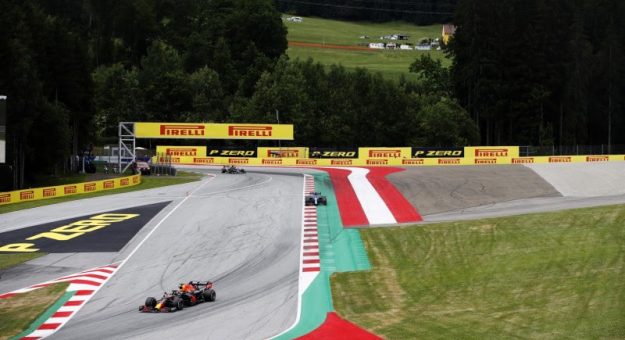CONCORD, N.C. — The Formula 1 incident between Lewis Hamilton and Max Verstappen at the British Grand Prix brought a few questions to mind, not the least of which is the term “avoidable incident.”
What exactly is an avoidable incident?
According to the FIA, it is an incident where there is a question as to whether a driver was either “wholly or predominantly” responsible for said incident on the track at the sole discretion of the stewards.
Seems pretty cut and dried, doesn’t it?
Well … it is and it isn’t, to tell the truth.
The incident on the first lap of the British Grand Prix between the two leaders in the F-1 standings was, in my opinion, a racing incident. Then again, I come from short-track and oval racing, where contact is normal and expected, so right away I’m at odds with the F-1 code.
The situation — two drivers battling for the lead who also happen to be the two drivers that are battling for the drivers’ championship and the two teams that are battling for the constructors’ championship — was, as they say, quite the big deal, especially when one of the competitors slides off the track and into a tire barrier at quite a high rate of speed.
The telemetry showed that Verstappen’s impact with said tire barrier was with a force of 51 g.
Not to get too deep in the weeds, Verstappen was leading heading down the old pit straight into Copse corner, which is a sweeping right-hander. Hamilton went low, then lower when Verstappen moved to block. Verstappen then flared a bit to give Hamilton some room on the bottom to make the corner.
Hamilton came up as Verstappen came back onto line to make the corner and the two touched, Verstappen’s right rear to Hamilton’s left front.
The impact was such that it popped Verstappen’s tire off the rim and sent him sliding through the runoff to the barrier. Hamilton continued.
At this point, Verstappen was out of the race and Hamilton continued. On pit road, the two teams began politicking in support of their drivers with the stewards. Words were said, implications were explained, etc., both of them edging toward hostility as they went on.
In other words, both teams engaged in the time-honored defense of hard racing.
The end result was a finding that Hamilton was predominantly responsible for the contact, and the stewards handed down a 10-second time penalty. The Briton served the penalty on his first stop and spent the remainder of the race passing his way to the front, getting leader Charles Leclerc with two laps remaining.
Why is this important?
With Verstappen out of the race, and thankfully uninjured, it meant that Hamilton had shaved 25 points off his championship advantage and was within eight markers of the lead.
That’s the kind of turning point that can swing the championship and that is why the teams were so involved in making sure their man got the support he needed. There’s big money in the drivers’ and constructors’ championships.
My feeling? Racing incident, all the way. To F-1 purists, this may sound like heresy, but in the overall view, I consider it two drivers giving it their best at high speed. What happened was unfortunate, but it will happen in big-time motorsports. There were several races remaining in the championship and plenty of time for the better man/team to win out over them.
Contact, as I said, is to be expected in any form of racing where cars can occupy the same position at any moment in time. When you’re going that fast and that close together, stuff happens. The short version, from my position, is … let them race.
Of course, an F-1 car is not a stock car or a sprint car or a midget. It’s a jet plane with wheels. Contact is to be avoided if at all possible.
That’s my two cents.
Unless I miss my guess, this will happen again before the season ends and the championship is decided.
